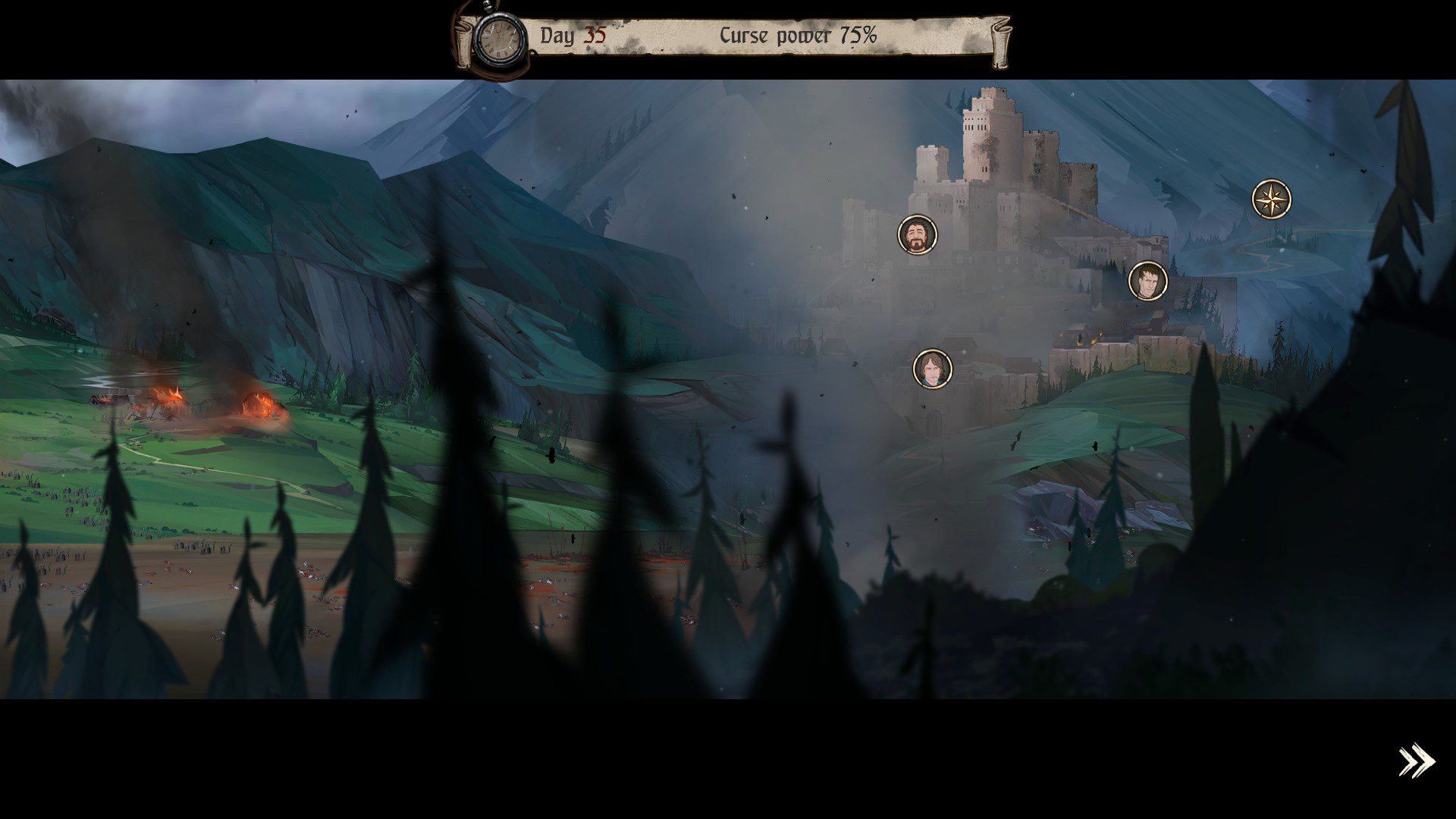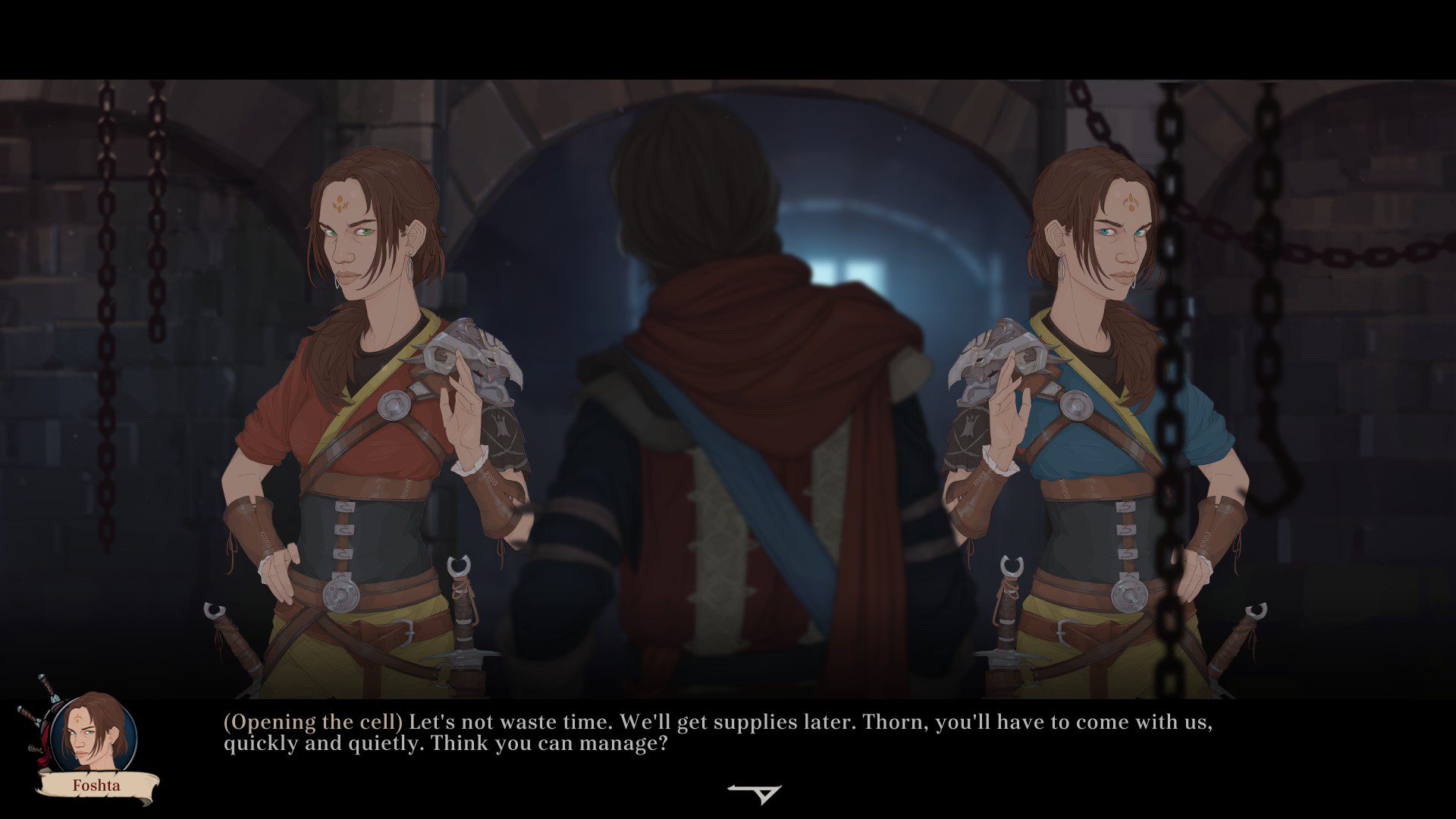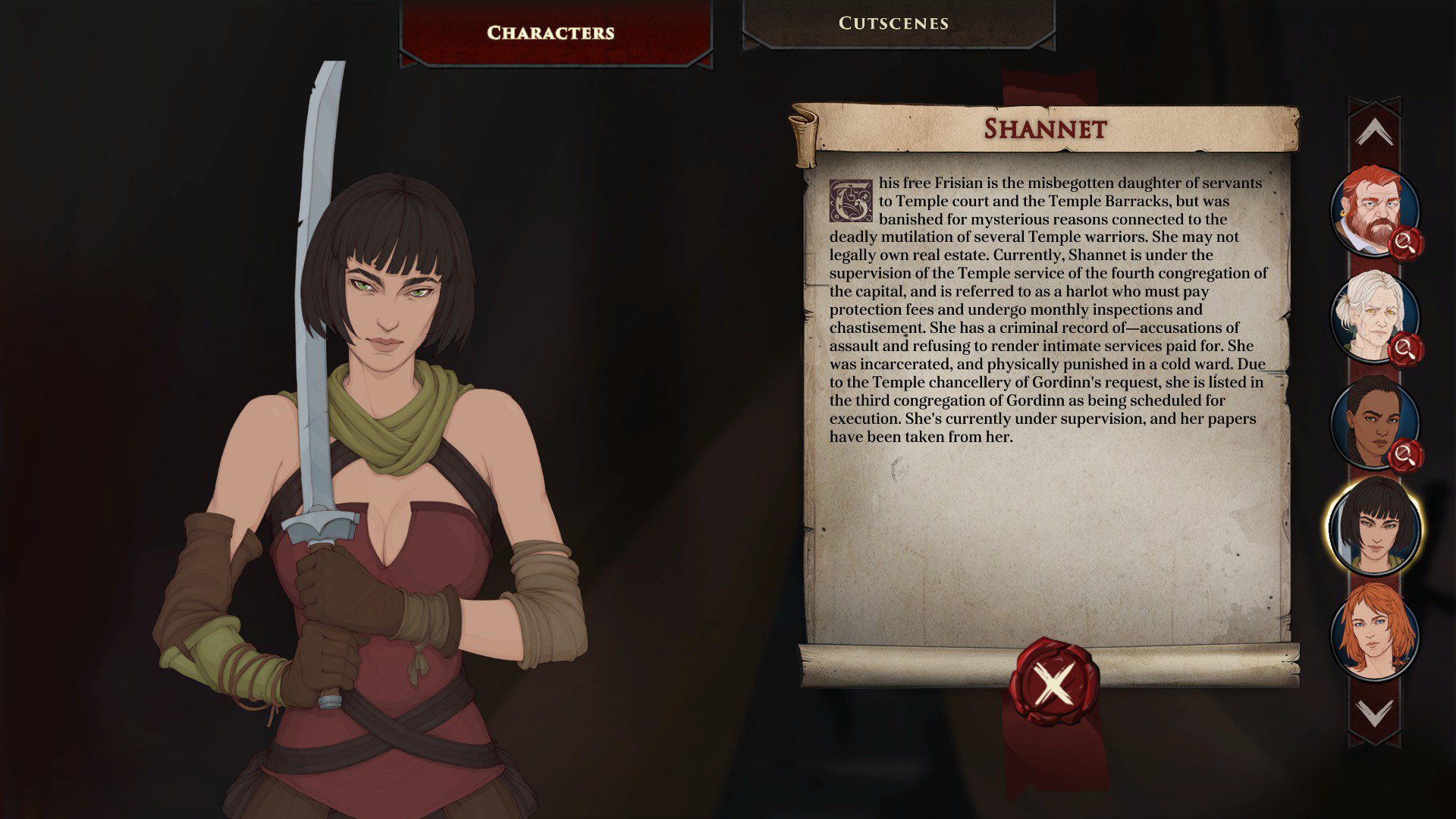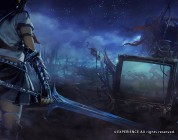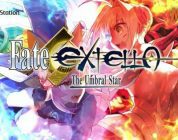Mixing elements of classic turn-based RPG combat with procedurally generated encounters, main characters in actual jeopardy, a multiplayer combat mode, and multiple ways to experience the sweeping story in an original universe, Ash of Gods: Redemption is an ambitious first game from Eastern European development team AurumDust. While the team may have bit off a bit too much scope in parts, the overall result marks a solid entry into the pantheon of turn-based RPGs.
Funded originally through private money, then through a successful Kickstarter campaign, Ash of Gods: Redemption takes place in the world of Terminium, an elaborate fantasy universe created by novelist Sergey Malitsky in his Ash of Gods series. While Mr. Malitsky is largely unknown in North America, the Polish descended author is quite popular in Russia, where his fantasy series have been published. The deep backstory and world-building provide an excellent setting for the game, creating a living universe that players will want to return to and explore multiple times to delve out all of the hidden secrets.
The game’s primary story follows three different groups. After a long period of peace, a Reaping has begun in Terminium, threatening the lives of everyone and everything in the land. Against this backdrop, Hopper Rowley, Thorn Brennin, and Lo Pheng each set out with various groups with goals of stopping the Reaping, rescuing family, and getting home, respectively.
It’s a big story, perhaps too big. The plot splits out into chapters, with most chapters having at least one part for each party. Keeping everyone straight can become a bit of a chore, and there are times when the plot because frustratingly convoluted, simply because it’s difficult to remember just who a specific group is and what they’re supposed to be doing sometimes. Having the current party’s active goal displayed on the game map helps with overall direction, but some of the middle sections, in particular, seem to drag out. At times the tri-part plot feels close to a middle series Wheel of Time novel, where different characters are all running about doing important things which have no apparent connection to each other.
This massive plot also leads to a few other problems. Some side characters disappear from parties with no explanation, or only a throw-away line comes in a chapter or two later that essentially says “Oh yeah, they left.” In a game world where each named character has at least a three-paragraph backstory, that seems like an unfortunate bit of oversight. Fortunately, unlike a middle book in The Wheel of Time, the branching plot in Ash of Gods: Redemption does eventually draw to a conclusion that sees all three-party groups come together for a major resolution. Unfortunately, while the final resolution is pretty solid, it’s marred by a feeling of “We ran out of money right about… here.” and an ending which sets up Ash of Gods 2 just a little too conveniently.
Despite these flaws, the story is decidedly the highlight of the game. Fortunately for players who just want to experience this story, Ash of Gods: Redemption includes a “Story Mode” difficulty level. Players can’t skip combat altogether in this mode, but they do receive max-level characters which allow them to cut through the turn-based combat system like a hot knife through warm butter. On the opposite side of the coin, the game also includes an Ironman Mode for players who want every combat to be a challenge with potentially lethal consequences. Walking a middle path is the game’s standard difficulty setting.
Combat is turn-based, on a square grid. Players can field parties of up to six characters, while AI opponents may sometimes field more or less depending on the encounter. After some initial party positioning, combat proceeds in a you-then-you format, where the player moves one character, the opponent moves one character, and so on. When all of the characters on a team have moved, the round ends. Providing added tactical depth are various magical cards which can be used in place of a character turn. More powerful cards may not activate until later rounds, and players can only have a maximum of five cards in their combat deck. There are a wide variety of character classes to choose from, each with different skills which can be improved over time. It’s entirely possible to go through two playthroughs of the game using almost totally different party compositions.
In combat, all of this back and forth can become a bit tedious. Combat sometimes feel like an annoying interruption to the story, not a key component of the game. Systems are poorly explained, and for this writer, it took a few chapters to really get a feel for how combat worked.
Really, this is a criticism that could be leveled at many parts of the game. It’s worth remembering that old-school RPGs often shipped with thick manuals explaining all of the systems in depth. Ash of Gods doesn’t ship with so much as an explanatory PDF file.
Surprising in a heavily story-focused RPG, Ash of Gods: Redemption also includes a robust multiplayer system, which almost functions as a game of its own. In multiplayer, players create a squad of six, and battle against other players. Rewards come in the form of loot boxes which supply gold, magical card shards, and character cards which unlock new characters and level up existing characters in the player’s multiplayer deck. Multiplayer seems like it’s set up perfectly for microtransactions, with Strixes being the monetary currency used to speed up opening loot chests and purchase certain premium items. However, there doesn’t seem to be any way to earn strixes other than as random loot items.

On the main multiplayer screen, you can see your party, your selected card deck, the chest you’re currently working to open, and the arena you’ll be fighting in.
At the time of this writing, the multiplayer community wasn’t especially large, but it is active. Matchmaking never ran for more than a few seconds before finding an opponent to match skills against.
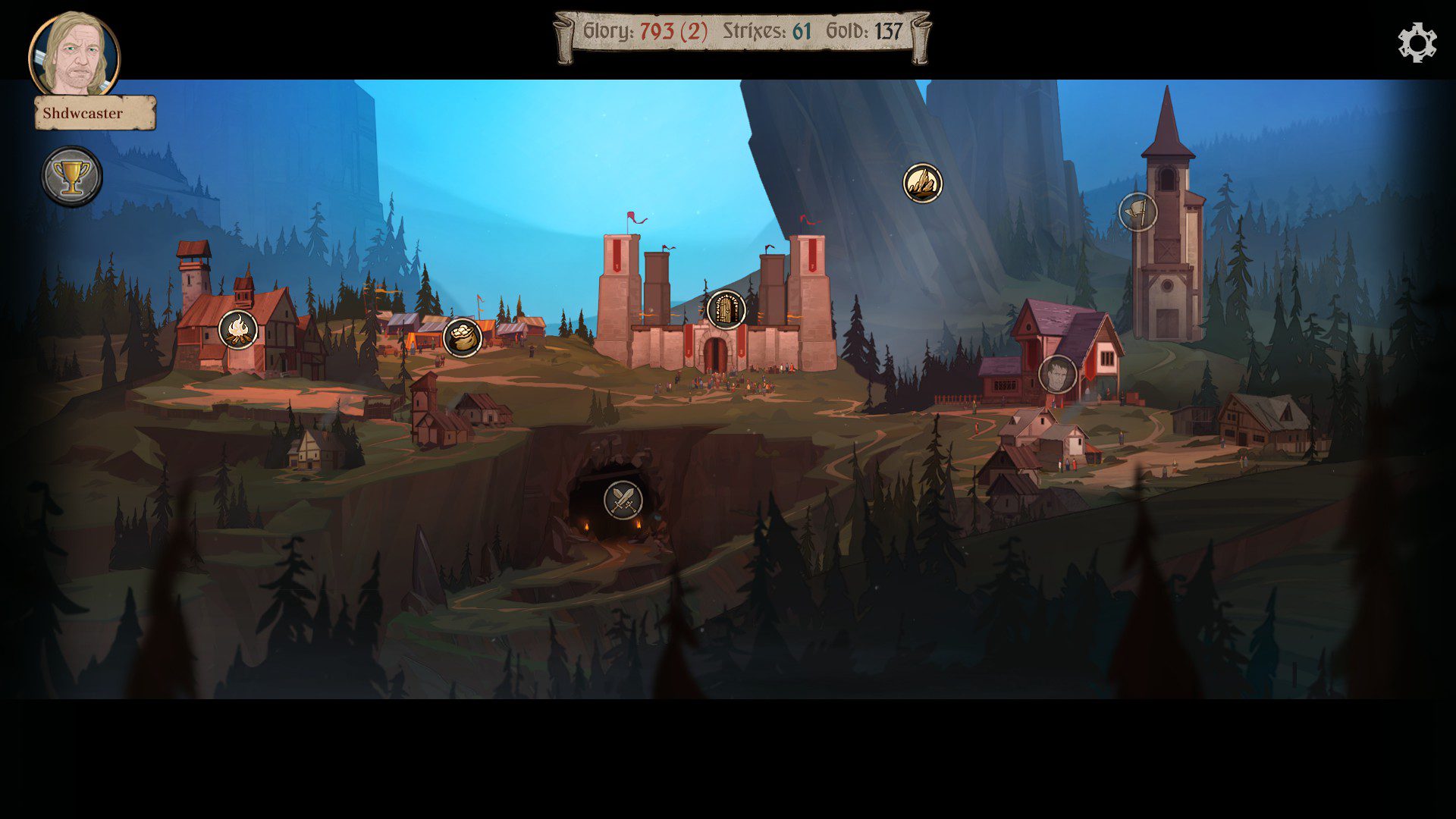
The main multiplayer screen. There are a few areas that are currently unavailable, which developer AurumDust says they are still working on.
Gamers who enjoy a good fantasy story and a well-constructed world will find a lot to enjoy in Ash of Gods: Redemption. Likewise, fans of tactical, turn-based squad combat. Whether that’s sufficient motivation to overcome poor documentation and meandering plots is another question.
For more information on Ash of Gods: Redemption, check out their official website.

